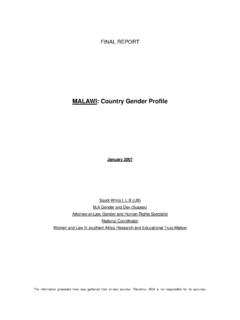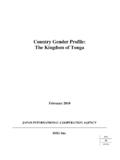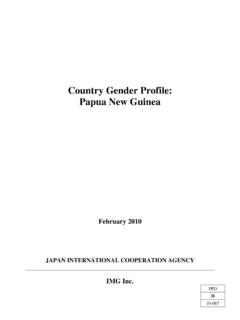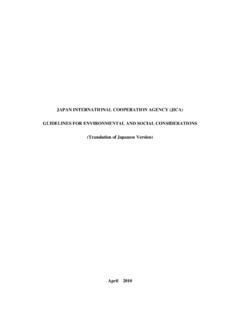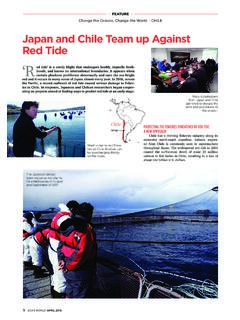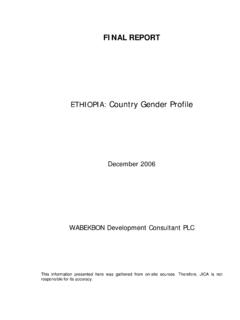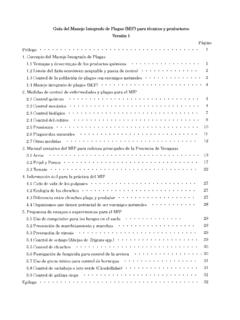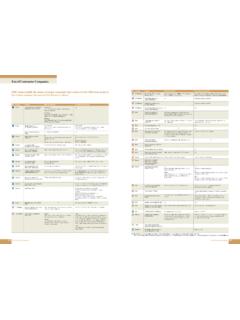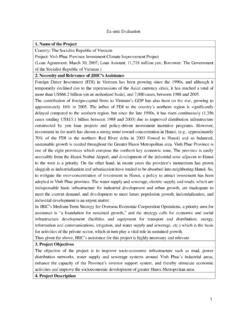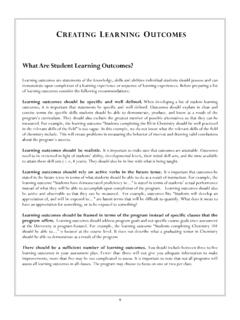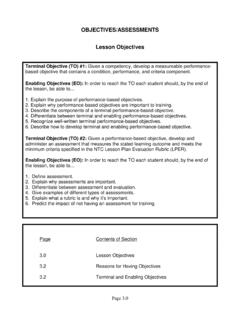Transcription of ProjectonImprovementofLocalAdministrationinCa mbodia
1 Project on Improvement of Local Administration in Cambodia Manual on Manual on Training Training needs assessment needs assessment What is Training needs assessment ? Five Steps of Training needs assessment Step 1: Identify Problem and needs Step 2: Determine Design of needs assessment Step 3: Collect Data Step 4: Analyze Data Step 5: Provide Feedback al Department of Local A 2 Project on Improvement of Local Administration in Cambodia (PILAC) Ministry of Interior and Japan International Cooperation Agency Manual on Training needs assessment Table of Contents 1. What is Training needs assessment ?..4 2. Five Steps of Traning needs assessment ..7 3. Step 1: Identify Problem and 4.
2 Step 2: Determine Design of needs 5. Step 3: Collect 6. Step 4: Analyze 7. Step 5: Provide Appendices Appendix 1: Questionnaire for Training needs assessment Appendix 2: Guide Questions for Training needs assessment al Department of Local A 3 Project on Improvement of Local Administration in Cambodia (PILAC) Ministry of Interior and Japan International Cooperation Agency Manual on Training needs assessment Glossary Competency An observable behavior supported by specific knowledge, skills, and attitudes. Each competency has a specific result or output. Content Analysis A procedure for organizing narrative and qualitative data into emerging themes and concepts. Usually associated with a quantitative form of analysis in which the themes are counted or measured. Feasibility Analysis A cost-benefit analysis completed prior to conducting training.
3 It is an estimate of the cost of the training weighed against the possible benefits that could be achieved if training were conducted Gap Analysis Also called performance analysis; identifies the difference between current performance and the desired performance. Interview The process of asking questions to experts or performers to identify training needs . Job Analysis The process of identifying all the parts of a specific job; conducted before a task analysis. learning objectives Describes a specific behavior, conditions, level of achievement and is written from the learner s point of view. needs assessment Gathering of information about a specific work need that can be resolved by training. The types of needs assessment include performance analysis, target population analysis, sorting training needs and wants, job analysis, and task analysis. needs versus Wants Analysis Discovers training needs that are related to the organization s work.
4 Training is linked to the final outcome and providing appropriate training will benefit the individual as well as the organization. Performance Analysis Also known as gap analysis. Performance analysis looks at an official s current performance and identifies whether the official is performing as desired Performance Deficiency A difference with a negative connotation, implying that the official is not meeting a known standard for performance. Project Team GDLA Task Force members and JICA experts. Target Population The individual or group involved in a needs assessment or training program. Task Analysis Finds the best method and sequence of steps to complete a specific task. Trainer A term used in a corporate setting for a teacher. Also instructor. Training needs assessment The method of determining if a training need exists and, if it does, what training is required to fill the gap. al Department of Local A 4 Project on Improvement of Local Administration in Cambodia (PILAC) Ministry of Interior and Japan International Cooperation Agency Manual on Training needs assessment What is Training needs assessment ?
5 Definition Training needs assessment (TNA) is the method of determining if a training need exists and, if it does, what training is required to fill the gap. TNA seeks to identify accurately the levels of the present situation in the target surveys, interview, observation, secondary data and/or workshop. The gap between the present status and desired status may indicate problems that in turn can be translated into a training need. Training can reduce, if not eliminate, the gap, by equipping the participants with knowledge and skills and by encouraging them to build and enhance their capabilities. The data on the present status are vital to the evaluation or impact survey in the latter part of the training cycle. These shall serve as the baseline data. The following are some techniques for acquiring such data.
6 These may be applied independently or in combination. Training needs = Desired Capability Current Capability of the Participants Planning is the first step of the training management cycle. At the planning stage, the steps are divided into two: i) Training needs assessment (TNA) and ii) Training Planning. This manual takes up TNA. 1 al Department of Local A 5 Project on Improvement of Local Administration in Cambodia (PILAC) Ministry of Interior and Japan International Cooperation Agency Manual on Training needs assessment TNA is also the process of collecting information about an expressed or implied organizational need that could be met by conducting training. The need can be a performance that does not meet the current standard. It means that there is a prescribed or best way of doing a task and that variance from it is creating a problem.
7 The TNA process helps the trainer and the person requesting training to specify the training need or performance deficiency. Assessments can be formal (using survey and interview techniques) or informal (asking some questions of those involved). (Source: Jean Barbazette, 2006, Training needs assessment : Methods, Tools and Techniques) Why do we need training? Because training is a means to ensure that government officials have the knowledge and right skills to be able to do their work effectively and competently. Training may be needed when there is a gap between the desired performance, and the current performance, and the reason for that gap is lack of skill or knowledge. Training may only be able to resolve part of the problem. Thus we need to analyze the problem and find out whether training will be able to resolve it. If training is necessary, we also need to define the objective of the training and how it will help the staff member(s) become more effective.
8 This process is called a Training needs assessment shown above or Training needs Analysis. It is important to note that, despite many reasons to conduct training shown above, training may sometimes not be the only solution to a problem. There are many other means that impact on someone s ability to do their work, as pointed out in the Report on Training needs assessment by PILAC. The following are other examples. Lack of skills or knowledge, or experience Not having the right equipment or resource Not being encouraged by managers and colleagues to do the right thing There are no standards or expectations that are set and communicated Bad workplace morale or conditions (Source: MOI/DOLA, 2004, Training needs assessment ) al Department of Local A 6 Project on Improvement of Local Administration in Cambodia (PILAC) Ministry of Interior and Japan International Cooperation Agency Manual on Training needs assessment Why do we need a Training needs assessment ?
9 First, identify dissatisfaction with the current situation and desire for change as similarities among the requests. Each request implies that a gap or discrepancy exists between what is and what could be or should be. A learning or performance gap between the current and desired condition is called a need. TNA aims at the following situations. Solving a current problem Avoiding a past or current problem Creating or taking advantage of a future opportunity Providing learning , development or growth The purpose of TNA is to answer some familiar questions: why, who, how, what, and when. The following are descriptions of the questions and what analysis can be done to answer them. Figure 1: The Purpose of TNA (Source: Jean Barbazette, 2006, Training needs assessment : Methods, Tools and Techniques) Why conduct the training: to tie the performance deficiency to a working need and be sure the benefits of conducting the training are greater than the problems being caused by the performance deficiency.
10 Conduct two types of analysis to answer this question: (1) needs versus wants analysis and (2) feasibility analysis. Who is involved in the training: involve appropriate parties to solve the deficiency. Conduct a target population analysis to learn as much as possible about those involved in the deficiency and how to customize a training program to capture their interest. How can the performance deficiency be fixed: training can fix the performance deficiency or suggest other remediation if training is not appropriate? Conduct a performance analysis to identify what skill deficiency is to be fixed by a training remedy. What is the best way to perform: there is a better or preferred way to do a task to get the best results.
